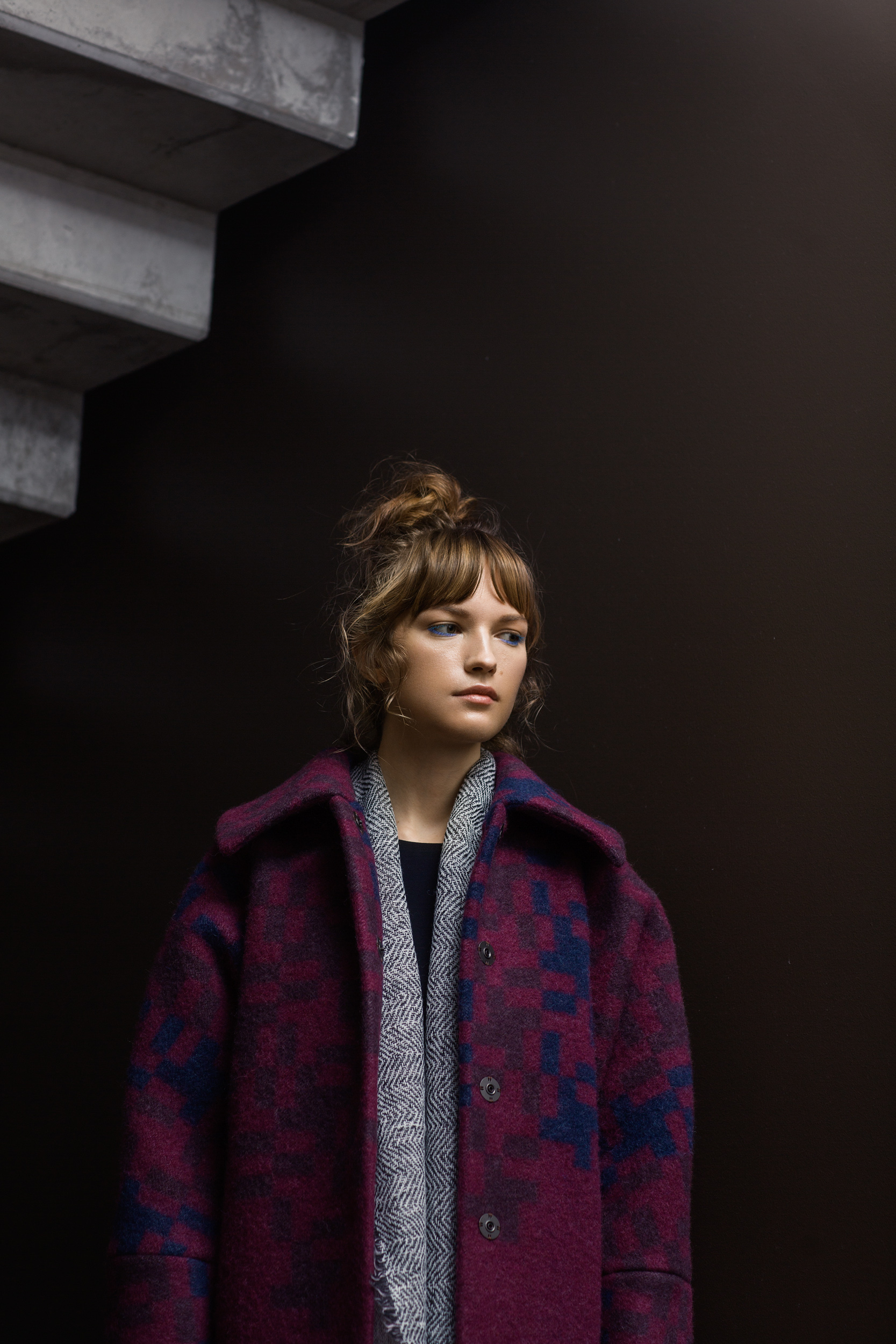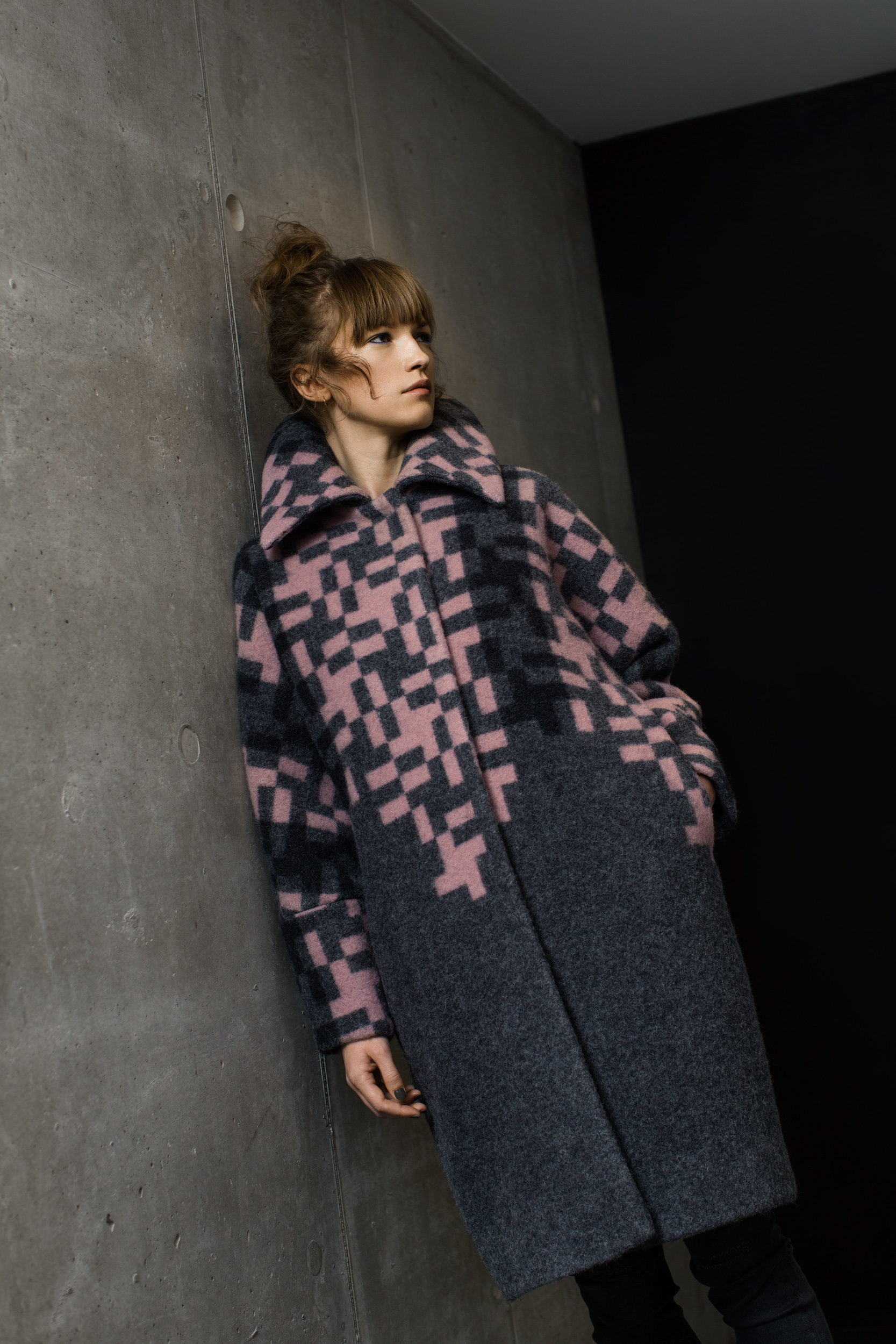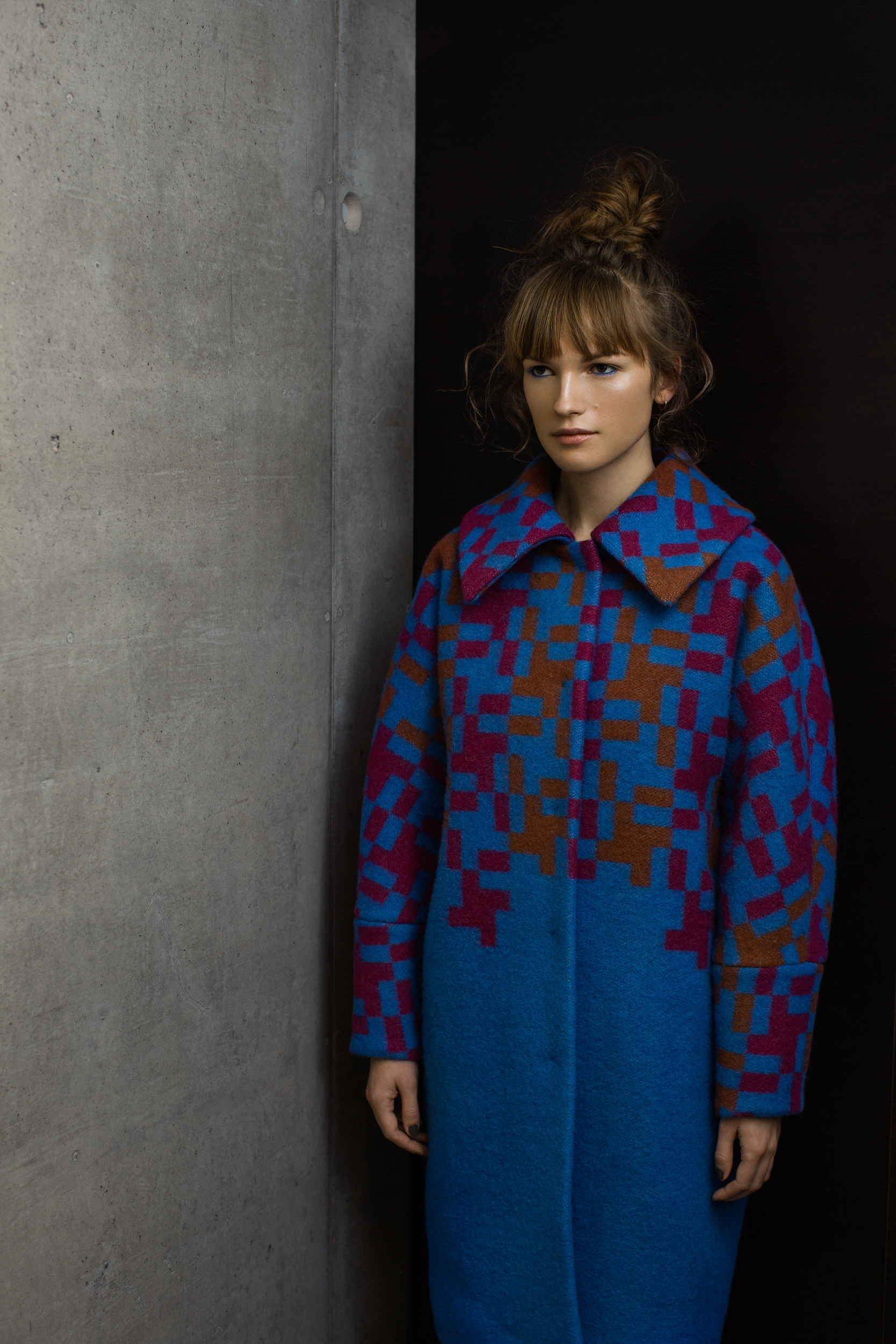As a brand that proudly celebrates the heritage of Raag workshop with its tradition dating back to 1975, Beej draws upon a modern, moveable take on India's traditional textile skills. Whilst placing the highest importance on sourcing locally from different parts of the country, the uniqueness of Beej lies in making their clothes entirely in-house. The nature of Raag's repertoire of garments enhance a subtle self-confidence and ease of movement. We say 'yes' to wearing traditional feminine enigma paired with flawless fluency.
Ikat Overlay Coat by Beej, 2016.
Foreword:
Beej started with the idea of bringing Raag, started by Asha Sarabhai in 1975 and available in other parts of the world but not yet at home, to India. We are keen to complement the Raag line of clothes with other objects that share its ethos and so created Beej as an umbrella brand under which these products can be sold. We want to celebrate India’s rich heritage, stand for uncompromising quality and a delightful customer experience, and adhere to the highest ethical standards. The Beej and Raag logos, created by Ivan Chermayeff, emphasise the relationship between the two and the fact that we think of ourselves very much as a contemporary brand.
What are the sustainable solutions you have incorporated into the making of your garments?
All Raag clothes are made entirely with handloom fabrics, the production of which keeps alive rich traditions, provides employment opportunities to artisans and is far less resource intensive than mill made fabrics. The environmental impact of our production processes is negligible as our clothes are made by hand.
Our clothes are designed to be durable and make allowances for the wearer to gain or lose a few pounds. Construction techniques and finishing details such as the elimination of seams when possible, addition of gussets for ease of movement and the avoidance of zippers ensure that our clothes last well and give pleasure over the years. We further facilitate their use over time by offering free alterations and repairs for life. Customers who would like to recycle or repurpose an old garment, by making a stole out of a beloved old coat for example, are encouraged to send them to us.
"Overproduction, rampant consumerism and wastefulness, especially in the case of fast fashion, further compounds the adverse global impact that the fashion industry can have."
Where do you see the importance of ethical fashion stand today? Why are we only now starting to open our eyes to the downside of the fashion industry?
The way clothes are produced can often be extremely destructive to the environment and exploitative of the people who make them. Overproduction, rampant consumerism and wastefulness, especially in the case of fast fashion, further compounds the adverse global impact that the fashion industry can have.
An increased awareness about these issues has made people more conscious of the choices they make. The building collapse at a garment factory in Bangladesh, which tragically killed over a thousand workers in 2013, was a watershed moment and resulted in global outrage. It brought to the fore concerns that had been harbored for a long time and which could no longer be ignored.
In light of these realities, and given the huge increase in the number of brands that have launched in the Indian fashion industry in the recent past, an ethical and humane approach to fashion is especially relevant.
Wrap Top by Beej, 2016.
What were the main social concerns that led you to inventing a sustainable brand?
We started out with the goal of making simple, durable, quality products, in an ethical manner, that we hope would bring pleasure to their users. We were keen to dispel the notion that good business practices make bad business sense by running a humane and efficient setup.
In the Indian fashion industry, it is common practice for many aspects of production to be outsourced. In such a situation, especially so in a developing country, it is very hard to ensure that the people making your products are working in a wholesome environment and are being treated fairly. We were adamant about wanting to make all our products entirely in-house. It enables us to guarantee that those involved in the making of our clothes get a fair wage and work healthy hours in an environment in which they are treated with dignity and respect. Having direct control over all production processes also enables us to maintain high quality standards. Very few companies, and none amongst our peers that we are aware of, make their own products entirely in-house.
"We were keen to dispel the notion that good business practices make bad business sense by running a humane and efficient setup."
What does the pairing India x Sustainable Fashion tell us today and possibly in the future? Where does its heritage stretch back in time?
We’ve always thought of tradition as a continuous strand, incorporated in the contemporary – that’s what keeps it alive. India has a long tradition of minimizing waste. Recycling has always been an imaginative and inventive art and is very prevalent. Old saris, for example, are turned into quilts when they can no longer be worn. The sari itself, being an unstitched garment, essentially a piece of cloth that is given its dimensionality by the wearer, is an inspired heritage. It can be worn in many different ways, limited only by the imagination of the wearer, and places emphasis on her instead of on a brand. We feel fortunate to be part of this heritage.
Your pieces look modern and comfortable, and not traditional at all! Who is the customer Beej is aimed at?
We hope Beej would appeal to those who have an understanding of detail and the feel of what they wear. Our audience is discerning women (age 25 and above) with a simple, understated aesthetic and a personal sense of style that isn’t dictated by trends. We envision our customers to have a wide range of interests, be global in outlook and have an appreciation and affection for India’s rich cultural heritage.
"The sari itself, being an unstitched garment, essentially a piece of cloth that is given its dimensionality by the wearer, is an inspired heritage."
What's the best opportunity that creating Beej has led you to? What has been the surprise element?
Appliqué cardigan by Beej, 2016.
It has been a tremendous privilege for us to get to work with Asha Sarabhai and to get the opportunity to bring Raag to customers in India. Being a small, and young, company we can be nimble and we want to make the most of this by transforming ourselves with each collection. Our first collection takes inspiration from the Russian artist Kazimir Malevich to reinterpret Raag classics and we have exciting plans for future collections. Each collection, while rooted in the values, sensibilities, and the design language of Raag, will hopefully seem fresh and vital. Exploring a different theme for each collection has been great fun and an intellectually and creatively stimulating experience.

















